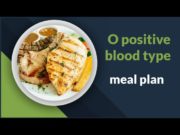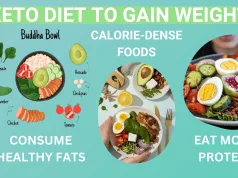How to make a diet plan is a question many ask, seeking a path towards healthier living. It’s not just about shedding pounds; it’s about creating sustainable habits that nourish your body and mind. This guide delves into the core principles of crafting a personalized diet plan, addressing everything from setting realistic goals to incorporating enjoyable exercise routines.
Whether you’re aiming for weight loss, improved energy levels, or simply a more balanced approach to food, this comprehensive guide will equip you with the knowledge and tools to succeed. We’ll explore how to assess your current diet, build a balanced meal plan, manage calorie intake, and stay motivated throughout your journey.
Understanding Your Goals
Before diving into the specifics of your diet plan, it’s crucial to establish clear and achievable weight loss goals. This foundational step sets the direction for your journey and helps you stay motivated.
Defining your goals provides a roadmap for your weight loss journey, guiding your choices and actions. It also helps you stay focused and track your progress, making the entire process more manageable.
Benefits of Setting Realistic Goals
Setting realistic goals is key to achieving sustainable weight loss. When goals are too ambitious, they can lead to frustration and discouragement, making it more likely that you’ll abandon your efforts.
Realistic goals are achievable and promote a sense of accomplishment. They contribute to your overall well-being by reducing stress and boosting your self-confidence.
Examples of SMART Goals
SMART goals are a helpful framework for setting effective weight loss goals. SMART stands for:
- Specific: Clearly define what you want to achieve. Instead of “lose weight,” aim for “lose 1-2 pounds per week.”
- Measurable: Quantify your goals to track progress. Use metrics like weight, body fat percentage, or inches lost.
- Achievable: Set goals that are challenging but attainable. Aim for a 1-2% body weight loss per week, which is a healthy and sustainable rate.
- Relevant: Ensure your goals align with your overall health and fitness objectives.
- Time-bound: Set deadlines for achieving your goals. This creates a sense of urgency and helps you stay on track.
Here are some examples of SMART weight loss goals:
- Short-term: Lose 1-2 pounds per week for the next 4 weeks.
- Long-term: Lose 10% of your body weight in 6 months.
- Specific: Reduce your daily calorie intake by 500 calories for the next 3 months.
- Measurable: Increase your daily steps to 10,000 for the next 2 weeks.
Assessing Your Current Diet
Before you can make changes, you need to understand your current eating habits. This step is crucial for creating a personalized diet plan that works for you. By analyzing your current food intake, you can identify areas for improvement and make informed decisions about your diet.
Tracking Your Food Intake
Tracking your food intake is the first step to understanding your current diet. This involves keeping a record of everything you eat and drink, including portion sizes and the time of day you consume each item.
This process can be done using a food diary, a tracking app, or even a simple notebook. Here are some tips for accurate food tracking:
- Use a food diary or tracking app. These tools can help you track your food intake easily and accurately. Many apps have features like barcode scanning, which can make the process even faster.
- Be as detailed as possible. Record the name of each food item, the amount you ate, and the time of day you consumed it. Also, note any specific ingredients or cooking methods.
- Be honest with yourself. Don’t try to hide any foods or snacks you eat. This information is crucial for creating an effective diet plan.
- Track your food intake for at least a week. This will give you a good idea of your typical eating habits.
Identifying Dietary Patterns and Habits
Once you have tracked your food intake for a week, you can start to identify patterns and habits that contribute to your current weight or health status. Look for trends in your eating habits, such as:
- Frequency of meals and snacks. Are you eating three meals a day and one or two snacks, or are you skipping meals and snacking more frequently?
- Portion sizes. Are you consistently eating large portions, or are you struggling to control your portion sizes?
- Food choices. What types of foods do you eat most often? Are you consuming enough fruits, vegetables, and whole grains, or are you relying heavily on processed foods and sugary drinks?
- Eating habits. Do you eat mindlessly while watching TV or working, or do you take time to sit down and enjoy your meals?
Identifying these patterns can help you understand why you may be struggling to achieve your weight or health goals. For example, if you consistently eat large portions of processed foods and sugary drinks, it’s likely that you’re consuming more calories than you need.
Building a Balanced Diet
A balanced diet is the cornerstone of good health and successful weight management. It involves consuming a variety of foods from all food groups in appropriate proportions, ensuring your body receives the necessary nutrients for optimal functioning.
Macronutrients: The Building Blocks of Energy, How to make a diet plan
Macronutrients are essential nutrients required in large amounts by the body. They provide energy and are crucial for various bodily functions. The three main macronutrients are:
- Protein: Essential for building and repairing tissues, producing enzymes and hormones, and maintaining a healthy immune system. Good sources include lean meats, poultry, fish, beans, lentils, tofu, and eggs.
- Carbohydrates: The body’s primary source of energy. They provide fuel for physical activity, brain function, and overall energy levels. Choose complex carbohydrates like whole grains, fruits, vegetables, and legumes over refined carbohydrates like white bread, sugary drinks, and processed foods.
- Fats: Provide energy, support hormone production, and protect organs. Healthy fats, like those found in avocados, nuts, seeds, olive oil, and fatty fish, are essential for heart health and brain function. Limit saturated and trans fats found in processed foods, fried foods, and animal products.
Micronutrients: The Essential Vitamins and Minerals
Micronutrients are essential nutrients needed in smaller amounts. They play vital roles in various bodily processes, including metabolism, immune function, and cell growth. Vitamins and minerals are crucial for overall health and weight management.
- Vitamins: Organic compounds that perform a variety of functions, including supporting vision, boosting the immune system, and aiding in blood clotting. They are found in fruits, vegetables, whole grains, and dairy products.
- Minerals: Inorganic substances that are essential for maintaining fluid balance, nerve function, and bone health. They are found in a variety of foods, including leafy green vegetables, dairy products, nuts, and seeds.
Examples of Healthy Food Choices
- Fruits: Apples, bananas, berries, oranges, grapes
- Vegetables: Broccoli, carrots, spinach, tomatoes, sweet potatoes
- Grains: Brown rice, quinoa, whole-wheat bread, oatmeal
- Protein: Chicken breast, fish, beans, lentils, tofu, eggs
- Dairy: Milk, yogurt, cheese
- Healthy fats: Avocados, nuts, seeds, olive oil
Calorie Management

Calorie management is a crucial aspect of any successful diet plan. It involves understanding how many calories you need daily and adjusting your intake to achieve your desired weight goals.
Calorie Deficit for Weight Loss
A calorie deficit occurs when you consume fewer calories than your body burns. This forces your body to tap into stored fat for energy, resulting in weight loss.
Calculating Your Daily Calorie Needs
To determine your daily calorie needs, you need to consider several factors:
* Age: As you age, your metabolism slows down, requiring fewer calories.
* Activity Level: A more active lifestyle requires more calories to fuel your workouts and daily activities.
* Weight: Your weight plays a significant role in calorie needs.
* Body Composition: Muscle burns more calories than fat, even at rest.
Several online calculators can help you estimate your daily calorie needs based on these factors.
The formula for calculating your Basal Metabolic Rate (BMR), which is the number of calories your body burns at rest, is:
BMR = (10 x weight in kilograms) + (6.25 x height in centimeters) – (5 x age in years) + 5
Tips for Adjusting Calorie Intake
Here are some tips for adjusting your calorie intake for sustainable weight loss:
* Start with small changes: Instead of drastically cutting calories, gradually reduce your intake by 200-500 calories per day.
* Focus on nutrient-dense foods: Prioritize fruits, vegetables, lean protein, and whole grains, which provide essential nutrients while keeping you feeling full.
* Stay hydrated: Water helps you feel full, supports metabolism, and can aid in weight loss.
* Listen to your body: Pay attention to your hunger and fullness cues. Avoid restrictive diets that leave you feeling deprived.
* Seek professional guidance: A registered dietitian can help you create a personalized meal plan that meets your individual needs and goals.
Meal Planning and Preparation
Meal planning and preparation are essential components of a successful diet plan. By planning your meals ahead of time, you can ensure that you have healthy and balanced food choices available, making it easier to stick to your dietary goals.
Sample Meal Plan
This sample meal plan provides a framework for a healthy and balanced diet for a week. You can adjust it to fit your individual needs and preferences.
- Monday:
- Breakfast: Oatmeal with berries and nuts
- Lunch: Salad with grilled chicken or tofu
- Dinner: Baked salmon with roasted vegetables
- Tuesday:
- Breakfast: Yogurt with fruit and granola
- Lunch: Leftover salmon with a side of quinoa
- Dinner: Lentil soup with whole-wheat bread
- Wednesday:
- Breakfast: Smoothie with spinach, banana, and protein powder
- Lunch: Chicken stir-fry with brown rice
- Dinner: Vegetarian chili with cornbread
- Thursday:
- Breakfast: Eggs with whole-wheat toast
- Lunch: Leftover vegetarian chili
- Dinner: Turkey meatballs with spaghetti squash
- Friday:
- Breakfast: Cottage cheese with fruit and nuts
- Lunch: Tuna salad sandwich on whole-wheat bread
- Dinner: Pizza with whole-wheat crust and vegetables
- Saturday:
- Breakfast: Pancakes with fruit and syrup
- Lunch: Leftover pizza
- Dinner: Grilled chicken with sweet potato fries
- Sunday:
- Breakfast: Waffles with fruit and whipped cream
- Lunch: Soup and salad
- Dinner: Roasted chicken with mashed potatoes and gravy
Meal Prepping Tips
Meal prepping can save you time and money, and help you make healthier food choices. Here are some tips:
- Choose recipes that can be easily doubled or tripled. This allows you to prepare a large batch of food that can be stored and enjoyed throughout the week.
- Set aside a few hours each week to cook and prepare meals. You can do this on the weekend or on a weekday evening.
- Store prepped meals in individual containers. This makes it easy to grab a healthy meal on the go.
- Use reusable containers and bags to reduce waste.
- Label your containers with the date and contents. This helps you stay organized and prevent food waste.
Benefits of Cooking at Home
Cooking at home is a great way to control the ingredients in your food and ensure that you are eating healthy and nutritious meals. Here are some benefits of cooking at home:
- You can control the ingredients. This allows you to avoid unhealthy additives, preservatives, and processed foods.
- You can save money. Eating out can be expensive. Cooking at home can help you save money on your food budget.
- You can eat healthier. When you cook at home, you can choose healthier ingredients and cooking methods.
- You can learn new skills. Cooking at home is a great way to learn new skills and become more confident in the kitchen.
Incorporating Exercise
Exercise is an essential part of a healthy lifestyle and plays a crucial role in weight loss and overall well-being. When combined with a balanced diet, regular physical activity can help you achieve your weight management goals, improve your cardiovascular health, boost your energy levels, and enhance your mood.
Types of Exercise
Regular exercise is crucial for a healthy lifestyle, and it encompasses various types, each contributing to different aspects of your well-being. Here are some common types of exercise:
Cardiovascular Exercise
Cardiovascular exercise, also known as aerobic exercise, is essential for improving your heart health, increasing your stamina, and burning calories. This type of exercise involves sustained, rhythmic movements that elevate your heart rate and breathing.
- Walking: Walking is an accessible and effective form of cardio, suitable for individuals of all fitness levels. A brisk walk for 30 minutes most days of the week can significantly improve your health.
- Running: Running is a more intense form of cardio that offers a higher calorie burn and improves cardiovascular fitness. Start gradually and increase your distance and pace as you build endurance.
- Swimming: Swimming is a low-impact, full-body workout that is excellent for cardiovascular health and joint health. It’s a good option for people with injuries or joint pain.
- Cycling: Cycling is a fun and efficient way to get cardio exercise. It can be done indoors on a stationary bike or outdoors on the road or trails.
- Dancing: Dancing is a fun and engaging way to get cardio exercise. It can improve your coordination, balance, and mood.
Strength Training
Strength training involves exercises that use resistance to build muscle mass and strength. It’s crucial for maintaining bone density, improving metabolism, and increasing your overall strength and functional capacity.
- Weightlifting: Weightlifting is a common form of strength training that involves lifting weights using barbells, dumbbells, or machines. It’s an effective way to build muscle and strength.
- Bodyweight exercises: Bodyweight exercises use your own body weight as resistance. Examples include push-ups, squats, lunges, and planks. They’re a convenient and effective way to build strength without needing any equipment.
- Resistance bands: Resistance bands are portable and versatile tools that provide resistance for a variety of exercises. They’re a great option for home workouts or when traveling.
Flexibility Exercises
Flexibility exercises, such as stretching, help improve your range of motion, reduce muscle soreness, and prevent injuries. Incorporating flexibility exercises into your routine can improve your posture, balance, and overall well-being.
- Yoga: Yoga combines physical postures, breathing techniques, and meditation. It’s a great way to improve flexibility, strength, and balance, while reducing stress.
- Pilates: Pilates focuses on core strength, flexibility, and control. It can help improve posture, reduce back pain, and enhance overall fitness.
- Stretching: Static stretching involves holding a stretch for a period of time. Dynamic stretching involves moving through a range of motion. Both types of stretching can improve flexibility and range of motion.
Finding Enjoyable and Sustainable Exercise Routines
Finding an exercise routine that you enjoy and can stick to is crucial for long-term success. Here are some tips for finding enjoyable and sustainable exercise routines:
- Choose activities you enjoy: The key to staying motivated is to choose activities that you find enjoyable. If you don’t like running, don’t force yourself to do it. Find something you enjoy, like dancing, swimming, or hiking.
- Start gradually: Don’t try to do too much too soon. Start with a few short workouts each week and gradually increase the duration and intensity as you get fitter.
- Set realistic goals: Set achievable goals that you can gradually work towards. Focus on making small, sustainable changes to your lifestyle rather than drastic overhauls.
- Find a workout buddy: Having a workout buddy can provide motivation and accountability. It can also make exercise more enjoyable and social.
- Vary your workouts: Keep your workouts interesting by mixing up different types of activities. This will help prevent boredom and keep your body challenged.
- Listen to your body: Pay attention to your body and rest when you need to. Don’t push yourself too hard, especially when you’re first starting out.
Staying Motivated
Sticking to a diet plan can be challenging, especially in the long run. It requires dedication, discipline, and a strong willpower to resist temptations and stay on track. However, with the right strategies and mindset, you can overcome these challenges and maintain your motivation to achieve your health goals.
Strategies for Overcoming Challenges
Staying motivated involves identifying and addressing the challenges that may hinder your progress. Here are some strategies to help you stay on track:
- Set Realistic Goals: Instead of aiming for drastic changes, set small, achievable goals that you can gradually build upon. For example, start by reducing your sugar intake by one serving per day or incorporating one more serving of fruits and vegetables into your daily meals.
- Focus on Progress, Not Perfection: Don’t get discouraged by occasional setbacks or slip-ups. Remember that everyone makes mistakes, and it’s important to learn from them and move forward. Focus on the progress you’ve made, and celebrate even the smallest victories.
- Find a Support System: Share your goals with friends, family, or a support group. Having people who understand and encourage you can make a significant difference in your motivation and accountability.
- Plan for Challenges: Anticipate situations that might tempt you to deviate from your diet plan, and have a plan in place to handle them. For example, if you know you’ll be attending a social gathering, bring your own healthy snacks or choose healthier options from the menu.
Tips for Staying Motivated
Maintaining motivation requires a proactive approach. Here are some tips to help you stay focused and inspired:
- Celebrate Milestones: Acknowledge and celebrate your achievements, no matter how small they may seem. Reward yourself with non-food-related treats, such as a new workout outfit, a massage, or a movie night.
- Visualize Your Success: Imagine yourself achieving your health goals and the positive impact it will have on your life. This visualization can help you stay motivated and focused on your long-term objectives.
- Find Enjoyable Activities: Incorporate activities you enjoy into your routine, such as cooking, gardening, or dancing. This can make your journey more enjoyable and help you stay engaged.
- Track Your Progress: Keep a food journal or use a fitness tracker to monitor your progress. Seeing your achievements can boost your motivation and provide a sense of accomplishment.
Importance of Positive Self-Talk and Self-Compassion
The way you talk to yourself can have a significant impact on your motivation and self-esteem.
- Positive Self-Talk: Replace negative thoughts with positive affirmations. Instead of saying “I can’t do this,” tell yourself “I am capable of achieving my goals.”
- Self-Compassion: Be kind to yourself, especially when you make mistakes. Remember that everyone makes mistakes, and it’s important to learn from them and move forward.
Seeking Professional Guidance
While the information provided in this guide can be helpful, it’s crucial to understand that everyone’s body and dietary needs are unique. Consulting a registered dietitian or other qualified healthcare professional can offer personalized guidance and support for achieving your health goals.
Benefits of Professional Guidance
Seeking professional guidance from a registered dietitian or other qualified healthcare professional offers numerous benefits, including:
- Personalized Diet Plan: A professional can create a diet plan tailored to your specific needs, goals, and health conditions, ensuring it aligns with your lifestyle and preferences.
- Addressing Individual Needs: Professionals can address individual dietary needs, such as allergies, intolerances, and medical conditions, ensuring the plan is safe and effective.
- Accountability and Support: Working with a professional provides accountability and ongoing support, helping you stay motivated and on track towards your goals.
- Evidence-Based Information: Professionals provide evidence-based information, ensuring the advice you receive is grounded in scientific research and best practices.
- Monitoring Progress: Professionals can monitor your progress, make adjustments to your plan as needed, and celebrate your successes.
Finding a Reputable Professional
Finding a reputable and experienced registered dietitian or other qualified healthcare professional is essential for successful dietary guidance. Here are some tips:
- Seek Recommendations: Ask your doctor, friends, or family members for recommendations of professionals they trust.
- Check Credentials: Ensure the professional is registered and licensed in your state or country, and verify their credentials through relevant organizations.
- Research Experience: Look for professionals with experience in your specific area of interest, such as weight management, sports nutrition, or diabetes care.
- Schedule a Consultation: Before committing to a professional, schedule a consultation to discuss your goals, needs, and any questions you may have.
- Trust Your Gut: Ultimately, choose a professional you feel comfortable with and trust to guide you on your dietary journey.
Final Wrap-Up: How To Make A Diet Plan
Creating a successful diet plan is a journey, not a destination. Remember, consistency is key. Don’t be afraid to seek professional guidance from a registered dietitian or healthcare provider to personalize your plan and address any specific needs. Embrace the process, celebrate your progress, and enjoy the journey towards a healthier, happier you.
Helpful Answers
What if I don’t like the foods recommended in a balanced diet?
It’s important to find foods you enjoy! There are many ways to make healthy eating enjoyable. Explore different recipes, experiment with spices and flavors, and seek out substitutes for foods you dislike. A registered dietitian can also help you find healthy alternatives that fit your preferences.
How often should I eat?
The frequency of meals depends on individual needs and preferences. Some people find it helpful to eat smaller meals more frequently throughout the day, while others prefer fewer, larger meals. Experiment to see what works best for you.
Can I still enjoy occasional treats while on a diet plan?
Absolutely! A healthy diet plan allows for occasional indulgences. The key is moderation. If you’re craving a treat, enjoy it in small portions and balance it with healthy choices throughout the day.
Creating a successful diet plan involves setting realistic goals and incorporating enjoyable activities. It’s important to remember that consistency is key, just like when fixing a broken dirt bike , you need to be persistent and patient. A well-structured diet plan should be tailored to your individual needs and preferences, allowing you to make sustainable changes for a healthier lifestyle.
When crafting a diet plan, it’s important to consider your overall health and nutritional needs. A key aspect of this is ensuring you’re getting enough collagen, which plays a vital role in maintaining healthy skin, bones, and joints. You can learn more about incorporating collagen into your diet by visiting how to get collagen in your diet.
Once you’ve addressed your collagen intake, you can move on to other important elements of your diet plan, such as incorporating plenty of fruits, vegetables, and whole grains.
Creating a successful diet plan involves a combination of factors, including healthy food choices and regular exercise. You might wonder if you can lose weight with just exercise, and the answer is complex. Check out this article to learn more about the relationship between exercise and weight loss.
Ultimately, a well-rounded approach that combines both diet and exercise is key for achieving sustainable weight loss and overall health.























